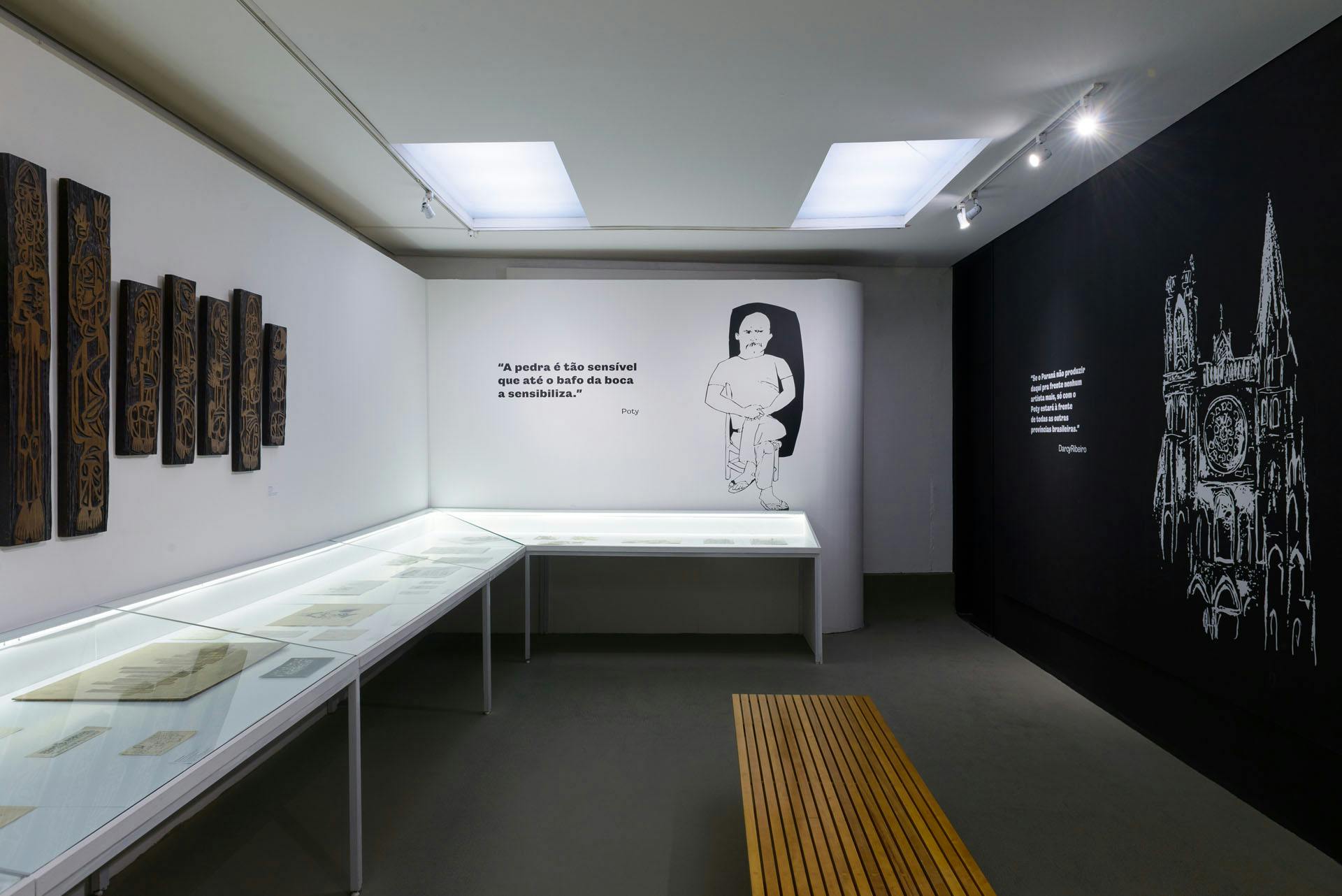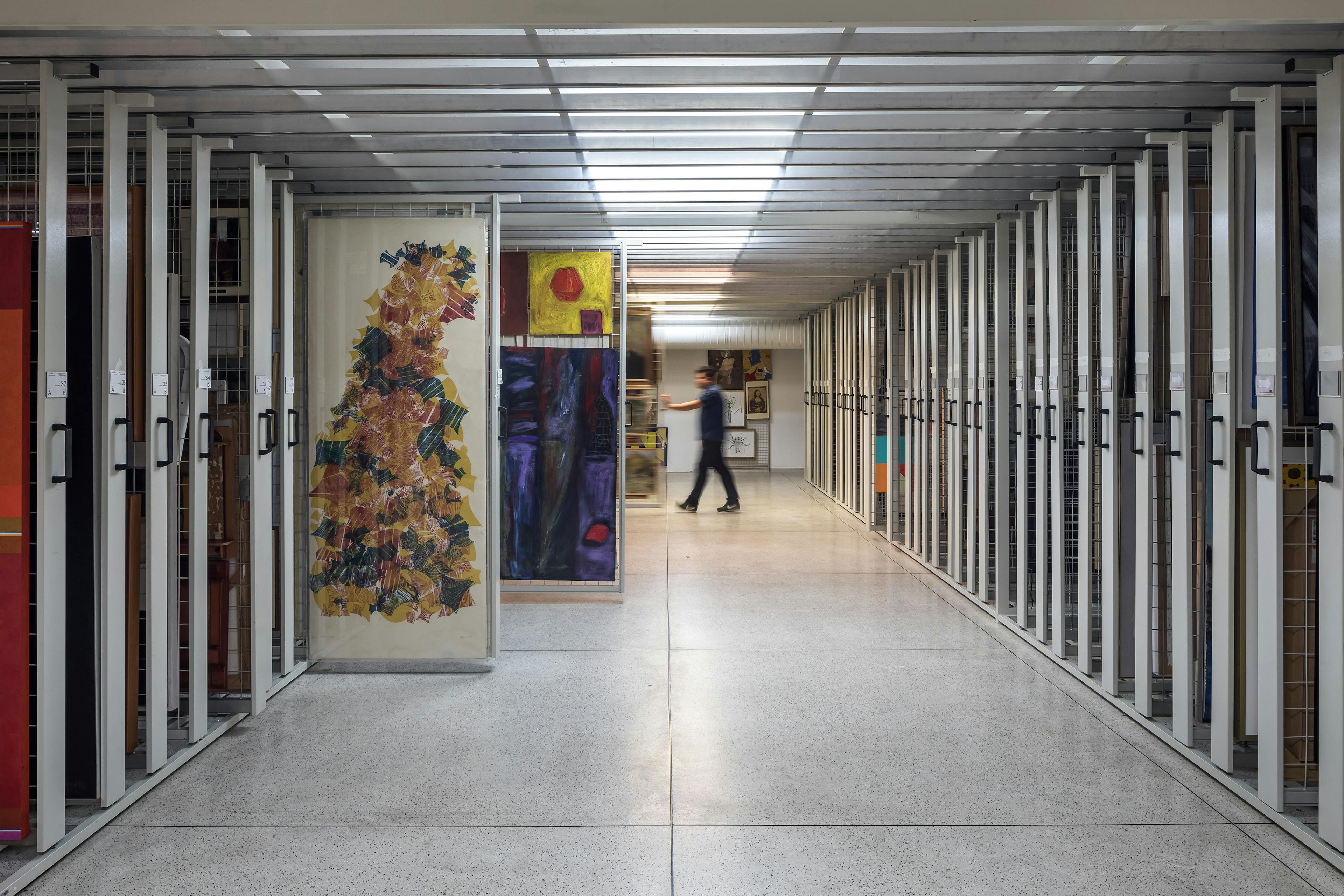Poty Lazzarotto
Oscar Niemeyer Museum Collection
Poty: one artist, one legacy
Whenever it happens that a museum incorporates an artist’s entire collection, as is the case with Poty Lazzarotto (Curitiba, 1924-1998), an undisputed icon of Paraná art history, this reflects the institution’s commitment not only to valuing local art, even though Poty is a national figure, but to setting itself apart as an institution by even further enhancing its representativeness. Such was the case with the Oscar Niemeyer Museum as it incorporated into its collections, in early 2022, a set of 4,478 pieces by Poty Lazzarotto.
Poty started his career in drawing and then delved into engraving, which he mastered and went on to create the first course in engraving at Museu de Arte de São Paulo. Much of his work is biographical, ranging from boyhood memories near train tracks and wagons to impressions of Curitiba residents and the settings they inhabit.
Poty’s drawing and engraving work is straightforward and to the point. His trademark spontaneity has illustrated multiple Brazilian literary works, such as Euclides da Cunha’s Backlands and Guimarães Rosa’s The Devil to Pay in the Backlands. As could not have been otherwise, he portrayed the controversial Curitiba inhabitants featured in the tales of another Paraná icon, Dalton Trevisan.
And as if his literary work wasn’t enough, Poty left his mark across Curitiba through his tile-and-apparent-concrete monuments or panels, a practice initiated with the 1953 panel Desenvolvimento histórico do Paraná, on 19 de Dezembro Square. Other instances of this output include panels on Nestor de Castro Lane, showcasing, on one side, a scene from a Curitiba which no longer exists, and on the other, the evolution of the city, born amid the pine trees, inhabited by immigrants, and rising to prominence with its urban design.
The collection donated to the Oscar Niemeyer Museum spans that entire output. It gives us original artworks often reproduced in books and other publications on the artist, presents us with the drawings he made during his 1967 expedition to Xingu, and affords us a glimpse into the intimacy of a yet-largely unknown artist. It also features sketches, projects and studies, providing a glimpse into how his lines evolved from youth to maturity. As such, the collection provides truly ethnographic material on the artist.
Donated to the MON by Poty Lazzarotto’s family, the collection obviously also comprises finished works, drawings, woodcuts, lithographs, metal engraving, carved wood pieces and concrete blocks: thousands of pieces that clearly attest to the artist’s polyvalence.
Through Poty, we become aware of the art that was and is made in Paraná. Protecting not only this artist’s legacy, but his memory, is a duty, first and foremost. And that job has now been taken on and properly fulfilled by the Oscar Niemeyer Museum.
Ricardo Freire, historian
The works of the Poty Lazzarotto Collection were donated to MON, in 2021, by João Lazzarotto, the artist's brother.
Poty Lazzarotto
Gamblers at the bar, 1991 | Engraving | Lithogravure on paper, P.A | 36 x 29 cm
Poty Lazzarotto
Untitled, 1991 | Engraving | Lithogravure on paper | 21 x 19.5 cm
Poty Lazzarotto
Man on horseback,, 1989 | Engraving | Lithogravure on paper, A.L, 4/4 | 26 x 19 cm
Poty Lazzarotto
Human figure,, 1989 | Engraving | Lithogravure on paper | 26 x 19 cm
Poty Lazzarotto
Untitled, 12-1-1943 | India ink and watercolor on paper | 16.8 x 23.2 cm
Poty Lazzarotto
Untitled, 1942 | India ink and permanent ink on paper | 21.9 x 30.3 cm
Materials for Download
Digital folder

